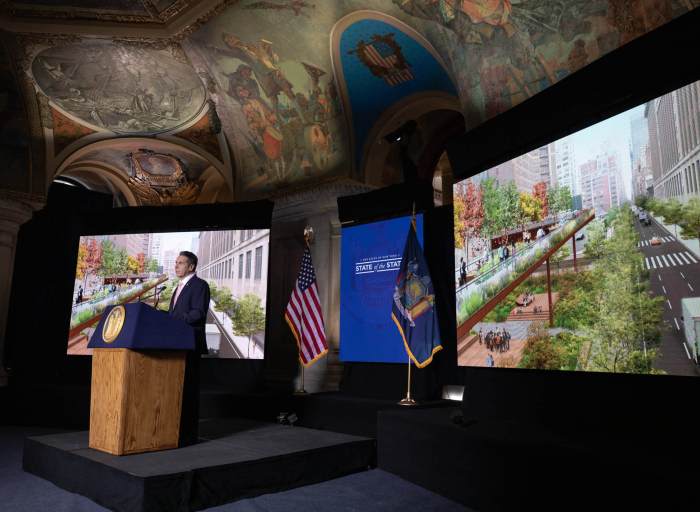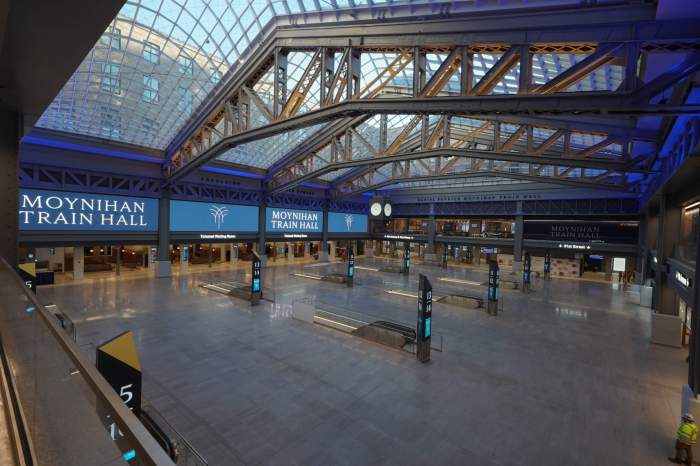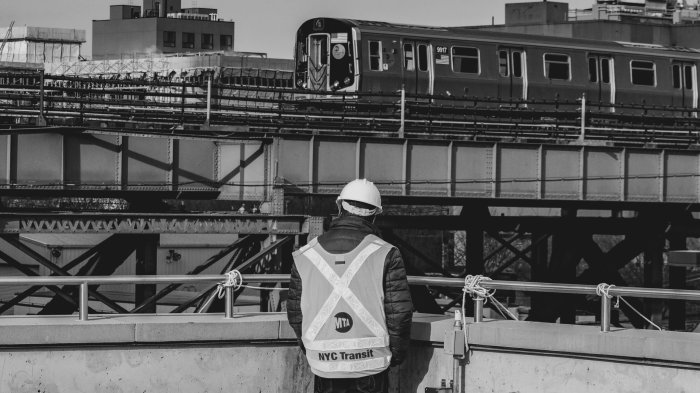Governor Kathy Hochul’s massive redevelopment plan for the area around Penn Station cleared a hurdle Thursday when the state’s Empire State Development (ESD) approved the mega-project.
ESD’s board — which is controlled by the governor — unanimously voted for the proposal allowing developers to build a new sweeping, predominantly-office campus the size of Hudson Yards next to the station, which officials say will help fund upgrades to the often-reviled Midtown transit hub, but the state has yet to release key data to back up that claim.
The proposal the governor inherited from her predecessor, Andrew Cuomo, has drawn scrutiny from good government groups and lawmakers for keeping key details about its financing under wraps and because it stands to give huge tax breaks to one of Hochul’s political donors.
Leaders of the state development authority on Thursday praised the project for generating funds to boost transit in the Big Apple and beyond.
“This project has not only great benefits for the City of New York, but certainly the entire metropolitan region,” said ESD board chairperson Kevin Law during the July 21 board meeting.
“I think the amendments that Governor Hochul made to this project were terrific and really enhanced the public realm aspects of this project, creating a really neat, transit-oriented development around the most important transportation hub in the metropolitan area,” Law added.
The Penn plan still needs unanimous approval from an obscure panel of representatives from the governor and the state legislature known as the Public Authorities Control Board, which is set to hold a vote in the Albany State Capitol on Wednesday, July 27.
Lawmakers from the state Senate and Assembly sitting on the PACB could veto the proposal, but Cuomo defanged the board by allowing the governor to boot members in 2019 after it scuttled the deal for an Amazon headquarters in Queens, and Hochul has punted on restoring the panel’s full independence.
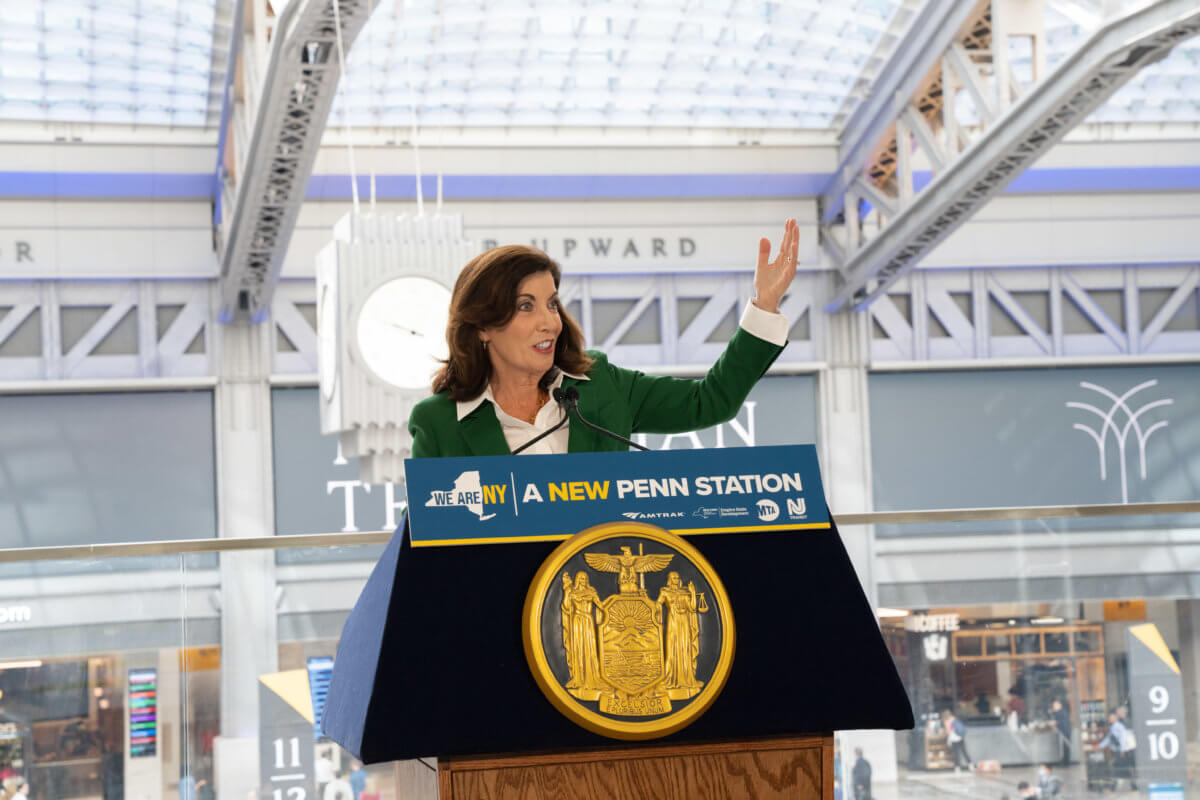
The Penn Station proposal will allow developers surrounding the station to not pay city property taxes in exchange for fees known as payments in lieu of taxes, or PILOTs, that will go toward funding Penn Station upgrades, with the rest to be made up by the state, New Jersey, and the federal government.
The plan enables the real estate companies to build 18 million square feet of mostly commercial space across eight sites, including nearly 1,800 apartments, 540 of which would be tagged at certain income levels.
There will also be 8 acres of new open space and ESD will form a joint subsidiary with the city to oversee these so-called “public realm improvements.”
The plan launched by Cuomo in early 2020 promises to dramatically transform the neighborhood. It can override the city’s zoning code because state officials determined the area around the Midtown train complex to be blighted, or “substandard or insanitary,” according to ESD board documents.
Hochul revived the proposal in November, two months after taking over the state’s leadership, and reduced the square footage by about 7% and adding residential units, but the new plan still drew the ire of locals at lengthy public hearings late last year.
The real estate proceeds from the new development will pay for up to 12.5% of a renovation of Penn Station and the same rate for a future expansion to the south with new tracks.
ESD expects Uncle Sam to pick up at least 50% of the cost for Penn Station’s roughly $7 billion reconstruction and its projected $13 billion expansion to the south.
New Jersey would pay for 25% of the cost and New York would have an equal share, but the Empire State would get up to half of its money from the PILOT proceeds.
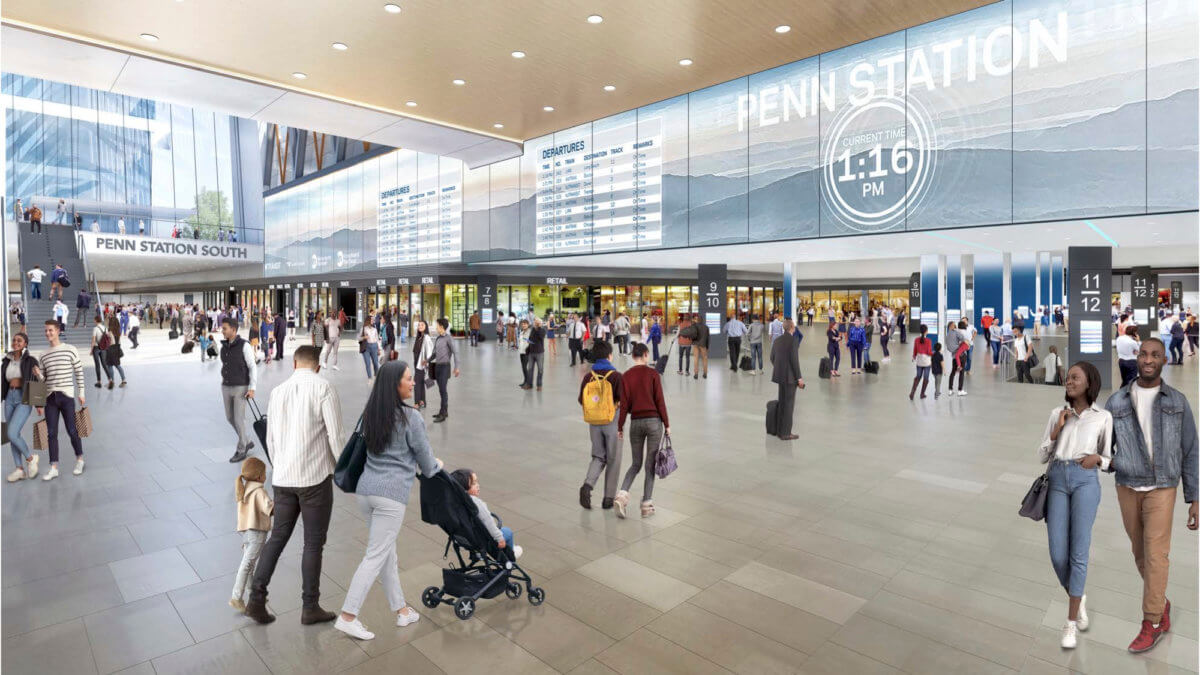
Developer Vornado Realty Trust owns or leases the largest share of the project site and its CEO, Steven Roth, donated the maximum allowable $69,700 to Hochul’s election campaign in December.
“Thanks to Governor Hochul and Mayor Adams’ leadership, the hundreds of thousands of New Yorkers who rely on Penn Station every day are even closer to getting the modern, commuter-oriented transit hub and district they deserve,” said an unnamed spokesperson for Vornado in a statement.
The plan could end up giving property owners like Vornado a $1.2 billion tax break, a report commissioned by watchdogs Reinvent Albany estimated last week.
Mayor Eric Adams on Monday agreed to the scheme in a non-binding letter with the state laying out a “financial framework” of how the PILOTs could be split up among different projects.
But the document left out dollar amounts for how much the state expects to make from the payments, or how deep the city’s tax losses could be.
Hochul and senior administration officials defended their secrecy a day before the vote, saying they didn’t want to give away their hand ahead of negotiations with Washington and the real estate companies.
“The federal government is not going to talk to us about how much they’ll put toward the project until they know that we have agreements with our local partners, meaning the City of New York,” Hochul told amNewYork Metro during an unrelated press conference Wednesday.
“We obviously need to go into negotiations with all of the property owners that are there, and so we’re not going to tip our hand on what we think that will actually be specifically,” added Kathryn Garcia, the state’s Director of State Operations.
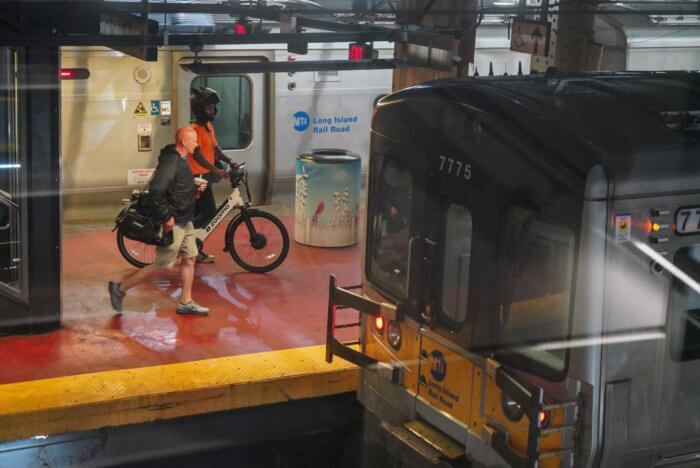
ESD leaders said at the board meeting Thursday that it was crucial to move quickly on the project in order to tap into federal funding.
“This is how we’re proving that we can pay our local share. It’s much more predictable and certain than navigating the annual budget process in the legislature,” said Holly Leicht, executive vice president for real estate development and planning at ESD.
There’s also a limited period when fewer Long Island Rail Road trains occupy the tracks, as the MTA moves some of them to a new connection at Grand Central Terminal and the end of this year, and before transit officials add more service arriving via four new stations in the east Bronx in 2027.
“That’s the moment when it’ll be easiest to take some tracks offline because not as many trains are coming in, and they’ll be able to do this work with minimal disruptions,” Leicht said.
Critics have questioned the need for so much new office space, as occupancy rates are still well below pre-pandemic levels and former commuters keep working from home, but Leicht said that they have found demand for Class A office space to still be strong in Midtown.
“Like all of us we have been reading the tea leaves and assessing all the data that’s coming out. It’s certainly a volatile moment right now,” Leicht said. “However, what we are seeing in a trend is what is being called a flight to quality.”





